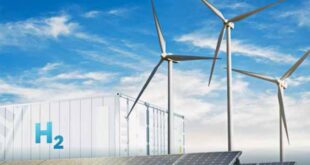Released ahead of the COP28 climate summit in Dubai, a report from the International Energy Agency (IEA) emphasised the need for oil and gas companies to let go of the “illusion” that carbon capture technology is a solution to climate change and invest more in clean energy.
“The Oil and Gas Industry in Net Zero Transitions” report outlines a responsible pathway for the industry to positively contribute to the evolving energy landscape.
Amid current policy settings, the latest IEA projections indicate that global demand for oil and gas will likely peak by 2030, with even sharper declines anticipated should stronger measures to combat climate change be adopted.
The report reveals that meeting the targets of the Paris Agreement requires a significant shift, with oil and gas use projected to decrease by over 75% by 2050 in a trajectory towards Net Zero emissions.
According to the IEA, only one percent of global clean energy investment originates from oil and gas companies, with 60% contributed by just four major players.
“The oil and gas industry is facing a moment of truth at COP28 in Dubai. With the world suffering the impacts of a worsening climate crisis, continuing with business as usual is neither socially nor environmentally responsible,” said Fatih Birol, Executive Director of the IEA. “Oil and gas producers around the world need to make profound decisions about their future place in the global energy sector.”
“The industry needs to commit to genuinely helping the world meet its energy needs and climate goals – which means letting go of the illusion that implausibly large amounts of carbon capture are the solution.”
To align with a 1.5 °C scenario, the report insists on a 60% reduction in the industry’s own emissions by 2030, with strategies to curb methane emissions, responsible for half of total emissions from oil and gas operations, deemed ‘cost-effective and well-established’.
Current annual investments of $800 billion in the industry surpass requirements for 2030 on a 1.5 °C pathway, suggesting the need to re-evaluate spending on new projects.
Approximately 30% of energy consumed in a decarbonised energy system by 2050 could benefit from the industry’s expertise, encompassing technologies such as hydrogen, carbon capture, offshore wind, and liquid biofuels.
To capitalise on these opportunities, the IEA urges a ‘significant shift’ in financial resource allocation, proposing that producers direct 50% of their capital expenditures towards clean energy projects by 2030.
It adds that carbon capture, while part of many firms’ transition strategies, cannot sustain the status quo, with projections underlining ‘inconceivable’ carbon capture volumes and electricity demands.
“The fossil fuel sector must make tough decisions now, and their choices will have consequences for decades to come,” said Dr Birol. “Clean energy progress will continue with or without oil and gas producers. However, the journey to Net Zero emissions will be more costly, and harder to navigate, if the sector is not on board.”

 Iran Energy News Oil, Gas, Petrochemical and Energy Field Specialized Channel
Iran Energy News Oil, Gas, Petrochemical and Energy Field Specialized Channel



